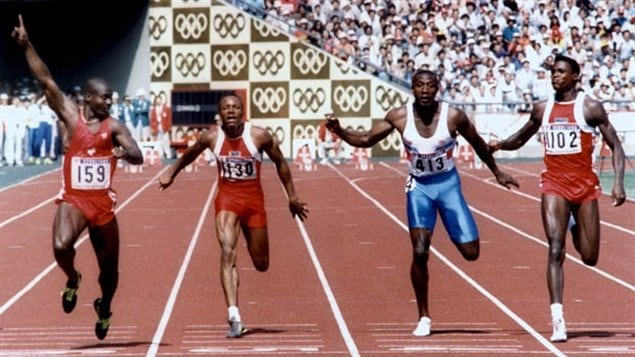It was over in less than 10 seconds. In fact, on September 24, 1988 Canadian sprinter Ben Johnson shocked the world with a new record in the 100 metres of 9.79 seconds.
In doing so he also shocked and infuriated his arch rival, American Carl Lewis, along with British contender Linford Christie.
Three days later however, Johnson, the new Olympic champion and record holder was stripped of his gold medal for having traces of the performance enhancing steroid Stanozolol, in his urine sample.
Bewildered and disgraced, Johnson denied using the drug and claimed that his customary pre-race herbal concoction had been spiked prior to the Olympic final.
He was suspended from competition for two years.
In an article in New Yorker magazine in 2001 ” Drugstore Athlete”, noted author and columnist Malcolm Gladwell described a wide range of doping in Olympic sport.
He cites examples of out how the sometimes incompetent and sloppy drug testing of the era could have wrongly convicted Johnson, and how others may easily have escaped detection. Documents from the East German archive show, for example, that in international competitions security was so lax that urine samples were sometimes switched, stolen from a “clean” athlete, or simply “borrowed” from a noncompetitor.
He also notes how several mediocre athletes suddenly and inexplicably rose to the top of their sport, including American sprinter Florence Griffith-Joyner. She died suddenly at age 38, but her 1988 record in the 100 and 200 metres still stand.
In his later book, Johnson’s coach, Charie Francis alleges a plot against Johnson. In his book called “Speed Trap: A track coach’s explosive account of how the world’s great athletes win with drugs”, Francis suggests that Johnson’s urine sample might have been deliberately doctored by a rival
“To my knowledge, Ben had never injected stanozolol. He occasionally used Winstrol, an oral version of the drug, but for no more than a few days at a time, since it tended to make him stiff. He’d always discontinued the tablets at least six weeks before a meet, well beyond the accepted “clearance time.” … After seven years of using steroids, Ben knew what he was doing. It was inconceivable to me that he might take stanozolol on his own and jeopardize the most important race of his life.”
Ben Johnson never fully regained his form following his suspension, and was banned for life in 1996 for steroid use.
It should be noted that Carl Lewis himself tested positive for stimulants three times in the lead-up to the 1988 Olympics.
Those tests were explained as “inadvertent use” and the US Olympic committee allowed him to compete. In a 2003 article in “The Guardian” Duncan Mackay wrote that Lewis admitted he tested positive but said he was just one of hundreds of US athletes who escaped bans.
British star, Lindford Christie, was banned in 1999 after a positive test for the steroid nandrolone.







For reasons beyond our control, and for an undetermined period of time, our comment section is now closed. However, our social networks remain open to your contributions.